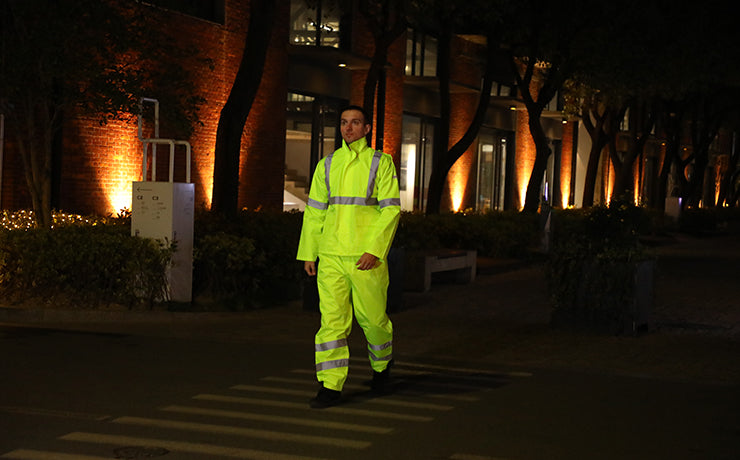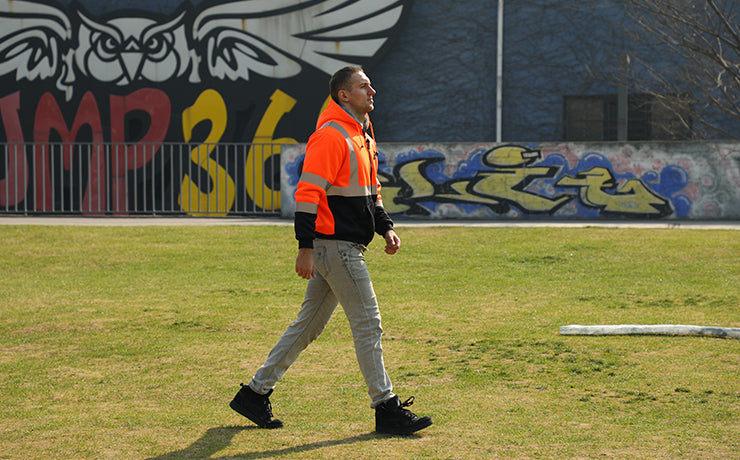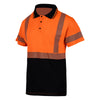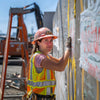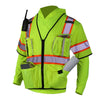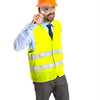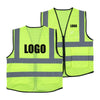4 Best Practices for Safety Training in the Construction Industry
As safety managers, we know the construction industry is brimming with risks. Every site we step onto is a potential landscape of hazard, where even a minor oversight could lead to serious consequences.
Our aim? To minimize these risks. Our tool? Safety training, with a particular focus on the pivotal role of safety clothing.
In this blog post, we'll explore the best practices for safety training and the essential role safety clothing plays in maintaining a safer environment on the job site. Let's bring the focus back to the frontline of safety – our workers and their gear.
Importance of Safety Training in the Construction Industry

Safety training is the bedrock of a safe construction site. It equips workers with the knowledge and skills to navigate potential hazards, prevent accidents, and respond effectively when incidents occur.
Moreover, effective safety training instills a safety culture within the organization, encouraging everyone on-site to maintain a safe environment actively.
The Vital Role of Safety Clothing

Let's take a moment to appreciate the unsung hero of the construction site - safety clothing. The correct gear isn't just a requirement; it's the first line of defense against a myriad of on-site hazards.
It protects the wearer from impact, cuts, chemical splashes, electrical hazards, and extreme weather and ensures occupational health.
Types of Safety Clothing and Equipment
-
Hard hats: Protects against falling objects, bumps, and electrical exposure.

-
High-visibility vests: Enhances visibility to avoid accidents, particularly in low-light conditions.

-
Safety boots: Designed to protect feet from falling objects, punctures, and slips.

-
Safety gloves: Protects hands from cuts, abrasions, temperature extremes, and chemical exposure.

-
Eye and face protection: Shields against flying debris, chemical splashes, and intense light.

Importance of Training on the Correct Usage of Safety Clothing
Effective use of safety clothing is more than just wearing it. Here's why proper training is indispensable:
-
Understanding the purpose - Workers must understand what each piece of safety gear is designed to protect against.
-
Proper fit - Ill-fitted gear can be as dangerous as not wearing any. Training should include how to choose and adjust gear for a proper fit. Check out our fit guide for plus-sized workers here
-
Care and maintenance - Gear needs regular care and maintenance to remain effective. Workers should be trained in cleaning, storage, and when to replace their gear.
-
Risk-specific gear - Some risks are specific to certain jobs or sites. Workers should be trained to understand and use equipment designed for these hazards.
By incorporating safety clothing usage in safety training programs, we're not just ticking off a box in the compliance checklist. We're committing to worker safety by ensuring they are prepared to protect themselves effectively on the job.
Best Practices for Safety Training
A robust safety training program is the cornerstone for workplace safety. Let's dive into the practices that can improve your safety training.

1. Identifying Common Risks in the Construction Industry
Before we can mitigate risks, we need to identify them. Understanding the hazards specific to your work site is the first step of safety procedures.
Begin with a thorough risk assessment of the site and tasks. Identify physical hazards such as falling objects or trip hazards, health hazards like exposure to harmful substances, and ergonomic risks such as repetitive tasks or heavy lifting.
Recognize that every construction and development site is unique; hazards in one site may not be present in another. Hence, tailored training for each site is a must.
2. Safety Training Techniques
Safety training isn't a one-size-fits-all solution. Different people learn differently, and the more methods you can incorporate into your training, the better the understanding and retention of safety protocols will be.
Here are a few techniques:
-
Interactive Sessions - Engage trainees in discussions, quizzes, and role-plays to enhance understanding and retention.
-
Demonstrations - Show the correct procedures and techniques, especially for equipment usage and emergency procedures.
-
Hands-on Training - Let workers try out procedures and use safety equipment under supervised conditions. There's no substitute for practical experience.
3. Regular Updates and Refreshers
Safety isn't a 'set it and forget it' aspect. It needs to be a constant, consistent effort. Regular updates and refresher courses ensure that safety remains a top-of-mind concern for everyone on site.
They also help companies to address new hazards or changes in safety regulations and standards. Ensure your team continually improves their knowledge and skills, staying on top of the ever-evolving safety landscape.
4. Utilizing Technology
In the modern era, technology isn't just for convenience; it's a powerful tool for safety training. For good reasons, virtual Reality (VR) and Augmented Reality (AR) are becoming increasingly popular in safety training.
These technologies provide a safe environment for workers to familiarize themselves with potential hazards and practice responding to them. VR and AR can simulate real-life scenarios and risks that might be difficult and dangerous to replicate in traditional training settings. Solutions like TeamViewer Pilot offer remote Maintenance and Training support for on-site workers
Embrace these technologies to assist you in making your safety training more immersive, engaging, and effective.
The Role of Safety Managers in Promoting Safety Clothing Usage
Safety managers play a crucial role in promoting safe clothing usage. They are the safety champions within their organization, setting the tone for a safety-conscious culture. Let's break down their responsibilities in promoting safe clothing usage.
Supervision and Enforcement of Safety Clothing Usage
Safety managers must supervise and enforce the usage of appropriate safety clothing on the job site. This means ensuring that all employees are wearing their gear correctly and consistently.
This supervision applies to the workers on the ground and everyone else visiting the site, regardless of their position or purpose of visit.
Keeping up with Advancements and Standards in Safety Clothing
Safety clothing technology and standards are constantly evolving. As a safety manager, you must keep abreast of these changes.
-
Attend seminars
-
Participate in industry forums
-
Subscribe to safety publications to stay updated.
Once informed, you can implement these advancements in your organization, ensuring your workers are equipped with the latest and safest gear.
Role in Training and Motivating Workers to Use Safety Clothing
Safety professionals are also vital in training workers on safety clothing usage.
They should ensure workers understand why each piece of equipment is essential and how to use it correctly.
Beyond just training, safety managers should also motivate workers to use safety clothing consistently. As leading-by-example goes, safety managers should be dressed according to the highest standards. We have a guide for construction manager attire here.
Conclusion

The role of safety clothing in the construction industry cannot be overstated. It is our workers' first line of defense, protecting them from a wide array of potential hazards.
But safety clothing isn't a silver bullet; it must be integrated with comprehensive safety training programs, and an organizational culture prioritizes safety.
As safety supervisor, our responsibility lies in implementing these safety measures and driving their adoption across the board.
Remember, safety is more than just a protocol - it's a promise we make to our teams that we'll do our utmost to ensure they return home safely, day after day.
Now, make sure you don't have unsafe working conditions, and ensure that you are using the best practice. Be a Role Model For Other Organizations! We hope this article has helped.
Stay safe out there!

